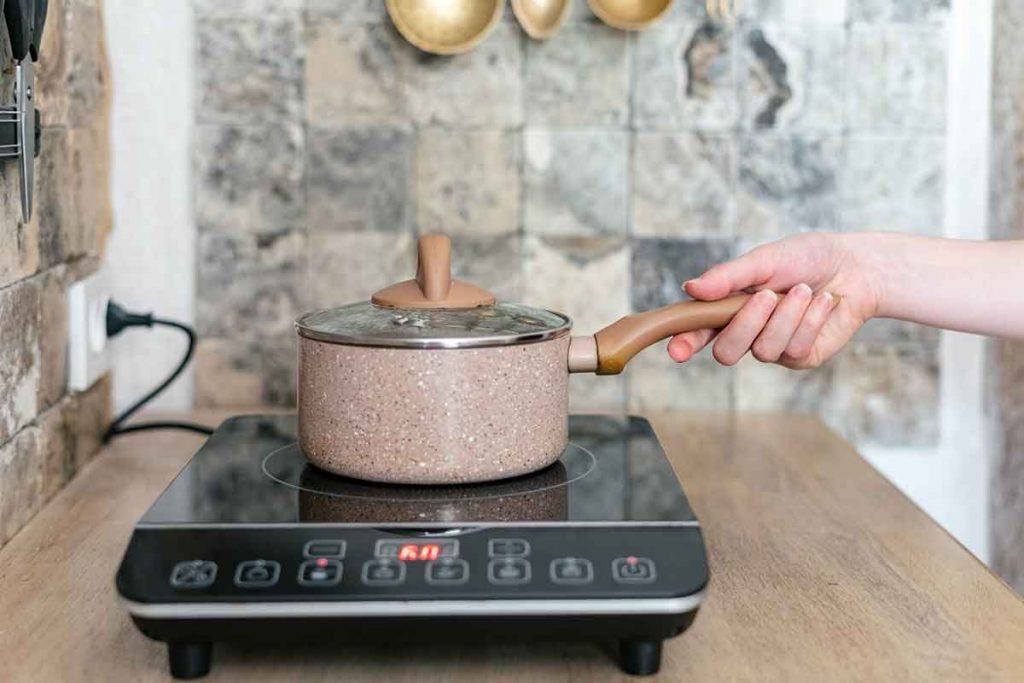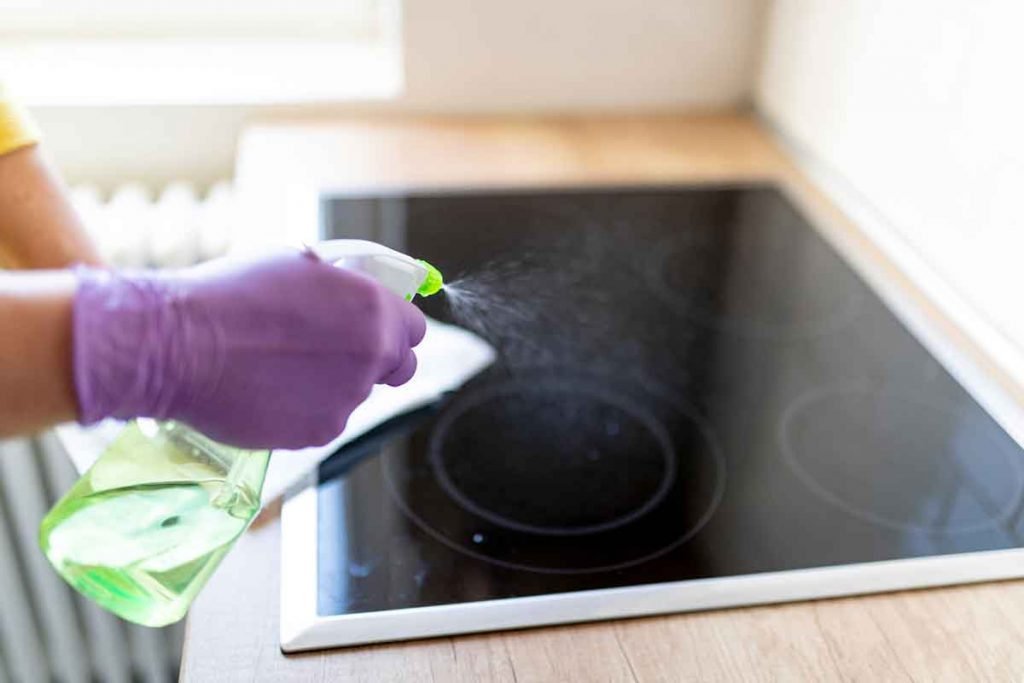Induction stoves are the real deal when it comes to modern kitchens. They offer rapid heating, impressive temperature control, and energy efficiency. However, to truly unlock the potential of induction cooktops, you need to use the right cookware, and the right sizes for that matter.
Whether you are a professional chef or just a home cook, you may ask yourself? Does the size of cookware matter on an induction stove? The simple answer is yes! The size of cookware, often measured in base area or diameter, plays a crucial role in determining the effectiveness of your induction cooktop.
This article explores how the size and shape of cookware affect the effectiveness and efficiency of an induction stove and how it influences your cooking results.
How Does Induction Cooking Work?
Before we go deeper into the specifics of cookware size, we need to first understand induction cooking. Unlike electric stoves or traditional gas cooktops that use thermal conduction, induction stoves work by generating heat through electromagnetic induction.
The cooktop’s magnetic field creates oscillating currents between the cookware and the burner, generating heating directly within the pan. This transfer of heat allows for precise temperature control as well as reducing waste management.
So, what’s the Right Size for Induction Cookware?
The right size for induction cookware is subjective because it largely depends on the size of your induction cooktop. To ensure optimal performance and efficient heat transfer, it’s always best to match the base area or diameter of your cookware to the actual size of the burner.
Here are some common dimensions of induction cooktops:
- Small induction cooktops — 6 – 8 inches in diameter
- Medium induction cooktops — 8 – 10 inches in diameter
- Large induction cooktops — 10 – 12 inches (or more) in diameter
How Do You Make a Small Pan Work on an Induction Stove?
A small pan can work on an induction stove, but to make it heat more effectively, follow the following tips:
- Ensure the pan is compatible with the induction stove, so you can avoid an error in which the pan won’t be detected. It should be made of ferromagnetic materials such as stainless steel and cast iron. Non-magnetic materials such as copper and aluminum won’t work.
- Center the cookware in the heating zone. This ensures that the magnetic field generated by the induction hob is focused on the bottom surface properly.
- If the induction hob comes with multiple heating zones, ensure that you choose the most appropriate one that closely matches the size of your small pan. If you pick a heating zone that’s too large, it may result in uneven cooking and inefficient heat transfer.
- Adjust your induction cooktop’s power setting to the right cooking temperature to match both your recipe and the size of your pan.
The Role of Cookware Size in Induction Cooking
Since an induction knob creates a magnetic field between the stove and the cookware, if the pan isn’t the right size, will it heat efficiently? Well, no.
Generally, the dimension of the cookware, especially the base area or the diameter, will impact heat distribution, energy consumption, and cooking speed. Let’s look at these factors to help you understand where we are coming from:
-
Heat Distribution
The size of cookware affects how evenly heat is distributed across the pan’s surface. A pan or pot with a large diameter tends to have a better and more uniform heat distribution. It ensures that the whole cooking surface gets consistent heat.
On the other hand, if you use cookware that’s too small for the induction burner it could result in uneven heating, leading to unevenly cooked food.
-
Energy Consumption
Who doesn’t want to save on bills? With induction cooking, you’re guaranteed to save some bucks on bills as it’s super energy efficient. However, to maximize energy consumption, you must use the right size of cookware. A pan or pot that closely matches the size of your induction stove allows for better coupling between it and the burner, resulting in efficient energy transfer.
On the contrary, if you use oversized cookware on a very small induction burner, there’ll be a lot of heat loss translating to increased energy consumption.
-
Cooking Speed
If you use a pan or pot that’s larger or smaller than the induction zone, it will create a weaker magnetic field, and this translates to less heat output. This means that you will spend more hours than you would in your kitchen preparing dinner.
Key Takeaway
Induction stoves may be less popular than gas and electric stovetops, but they have their benefits. You get precise temperature control and energy efficiency. But to enjoy what induction cooktops bring to the table (the kitchen table….) the size of cookware matters a lot. Pick a size that closely matches the size of your induction’s stove heating zone for optimal results.
Frequently Asked Questions (FAQs)
Can You Put a Small Pan on a Large Induction Stove?
Yes. Since induction cooktops use magnetic fields to heat the cookware directly (and not the heating surface of the hob), small pans or pots can work effectively. As long as the size of the cookware fits within the heating element and allows proper heat distribution, it will cook just fine.
What Does Pan Size Mean in Induction Cooking?
In induction cooking, the pan size refers to the base area or diameter of the bottom surface of the cookware. Normal sizes of induction cooktops are usually 6 – 8 inches, 8–10 inches, and 10 – 12 inches.
What is the Minimum Diameter for Induction?
Typically, induction hobs have a minimum pan diameter size of around 12 – 14 centimeters (4.7 to 5.5 inches). However, this requirement is different from one model to another, and always specified in the manufacturer’s user manual.
What is the Average Size of an Induction Burner?
The average size of an induction hob (also known as an induction burner) usually varies depending on brand and specific models, but standard ones have a width of 60 centimeters (23.6 inches). This size fits standard kitchen countertops.
Is it Possible to Use Multiple Big Pans on an Induction Hob at the Same Time?
Absolutely. It’s possible to use several big pans on an induction burner simultaneously, as long as the hob provides enough heating zones to accommodate them. Most induction hobs come with several heating zones of different sizes, allowing you to cook multiple meals at the same time.
Is a 60cm Induction Cooktop Big Enough?
Yes. A 60-centimeter cooktop is considered the standard size for most kitchen setups. It offers a good balance between space efficiency and functionality and features four heating zones depending on the model and brand.



